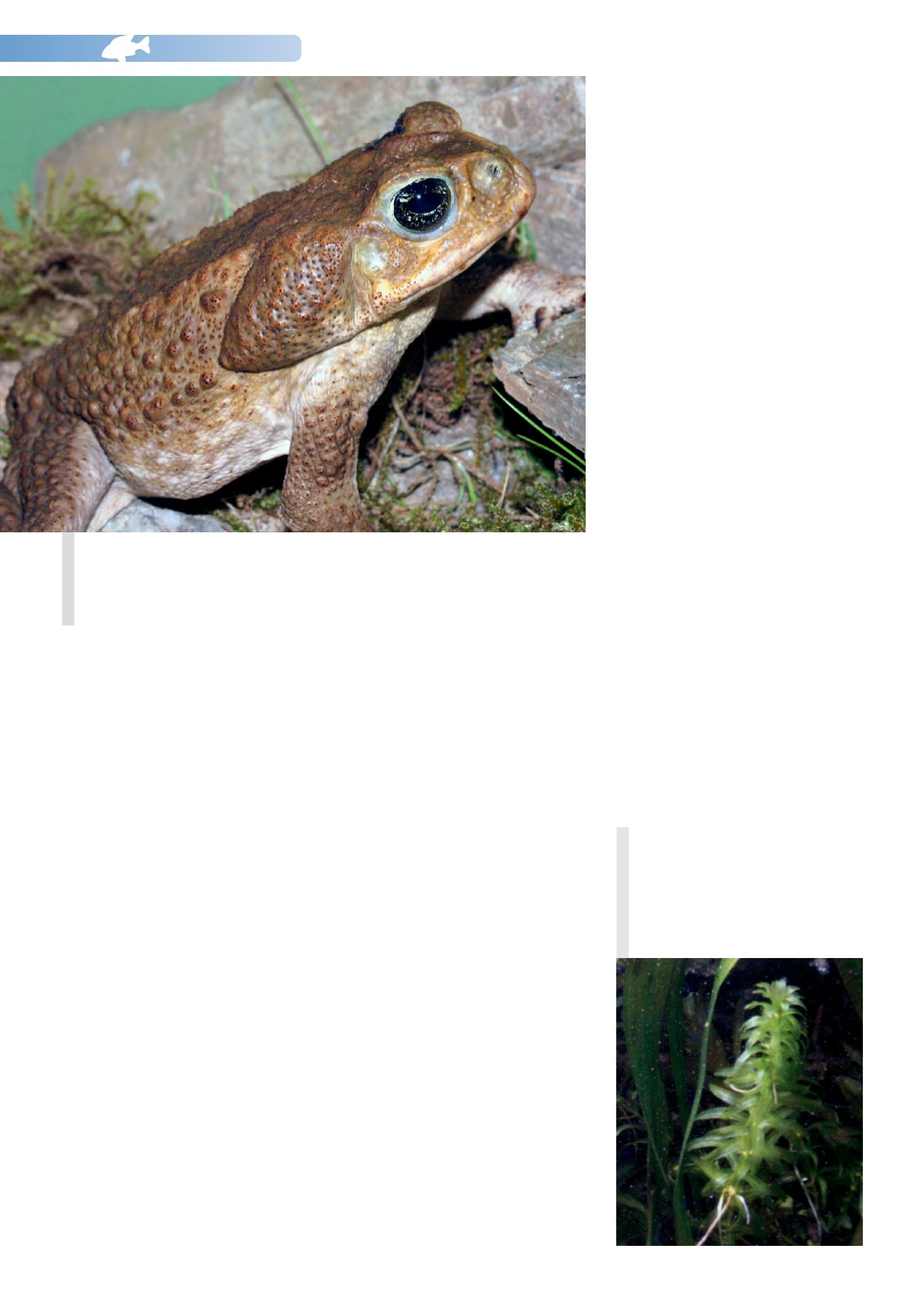
NEWS112
6
we have animal protection organizations
demanding that the trade should make
absolutely sure that every single animal
traded suffers no harm, and on the other
side thepet tradearguing that,forexample,
themortality rate among animals traded is
well below that of a comparably-sized
groupofanimals in thewild.
The recent resurgence of demands for
massive restrictions on the international
trade in animals and plants is based on an
increase in invasivespecies.
Invasivespecies
Sowhatare invasivespecies?Well,ananimal
or plant species is termed invasive if it is
spreading massively in an area where it
didn't occur originally (the cut-off date is
1492), and is in competition with the
aboriginal floraand faunaof thehabitat.The
term ”invasive”was deliberately chosen for
itsmilitaryflavor.It is intendedtoprovokean
emotional response whereby the invasive
species are branded as unwanted, harmful
invaders.
The dangers such alien animals and plants
representarenot tobeunderestimatedand
in many cases have already led to the
extinctionof native species.Sometimes this
appears tobeacompletelynatural process.
Thus since around 1930 the Eurasian
Collared Dove (
Streptopelia decaocto)
has
spread fromAsiaMinor toWestern Europe,
and, because they are resident year-round
have the advantage over the aboriginal
TurtleDove (
S. turtur)
,which ismigratory,of
occupying the best breeding sites before
the Turtle Dove returns from Africa. This,
combined with changed agricultural
methods (the Turtle Dove is particularly
fond of a fumitory species (
Fumaria sp.
, a
weed of the fields, whose population is in
seriousdecline)and thehugepressure from
huntingtowhichtheTurtleDove isexposed
duringmigration,has led topopulations of
theTurtleDovedecliningbymorethan60%
in the last25years.
But it is almost always unthinking releases
byhumansthatarethereasonforanimalsor
plants becoming invasive species. In the
case of animals these releases are often
deliberate.Fromthemid19thcenturytothe
late 1970s all sorts of fish and crustacean
specieswere imported and released, in the
hope that economically valuable species
might become established in waters that
contained no useful native species. This
almost always had terrible repercussions.
The Cane Toad (
Bufomarinus
) was introduced in Australia in 1935 to combat pests. Since then it has
spread very quickly and become a serious threat to Australian native species. Attempts to halt the
spread of the Cane Toad have come to naught. It has also proved an example of how a small animal
speciescannotbeendangeredbycollectingas longas thehabitat isotherwise favorable for thespecies.
The Canadian Pondweed
(Elodea canadensis
)
is an aquarium plant fromNorth America. At
the beginning of the 20th century it
proliferated massively in Germany to the
extent that travel along inland waterways
came virtually to a standstill.Nowadays it is a
harmless neophyte.Nobodyhas been able to
explain why some neobionts attain plague
speciesofanimalhasbeenwipedoutbythe
livestock trade,whileconservativeestimates
(Wilson, 1992) suggest that for decades
around 17,500 animal and plant species
have gone extinct every year due to
environmental destructionbyhumans.This
estimatewasbasedona totalof fivemillion
species in existence, a quarter of them
plants.Basedon the currentmost probable
estimateof5-30millionspecies inexistence,
however, the number of species going
extinct annually couldeasilybe six times as
great and amount to more than 100.000
species.
Obviously the trademustalsoconcern itself
with animal welfare, but it is a generally
acceptedprecept that for purely economic
reasonsalone the trade treats livestockwith
careandmust continue todoso,asnobody
is going to pay good money for dead or
dying animals. The greatest conflict
between animal protection and the pet
trade rests on the fact that the focus of
animal protection is the individual. It is very
difficult to achieve a consensus between
two groups of interested parties that both
think they are in the right: on the one side


